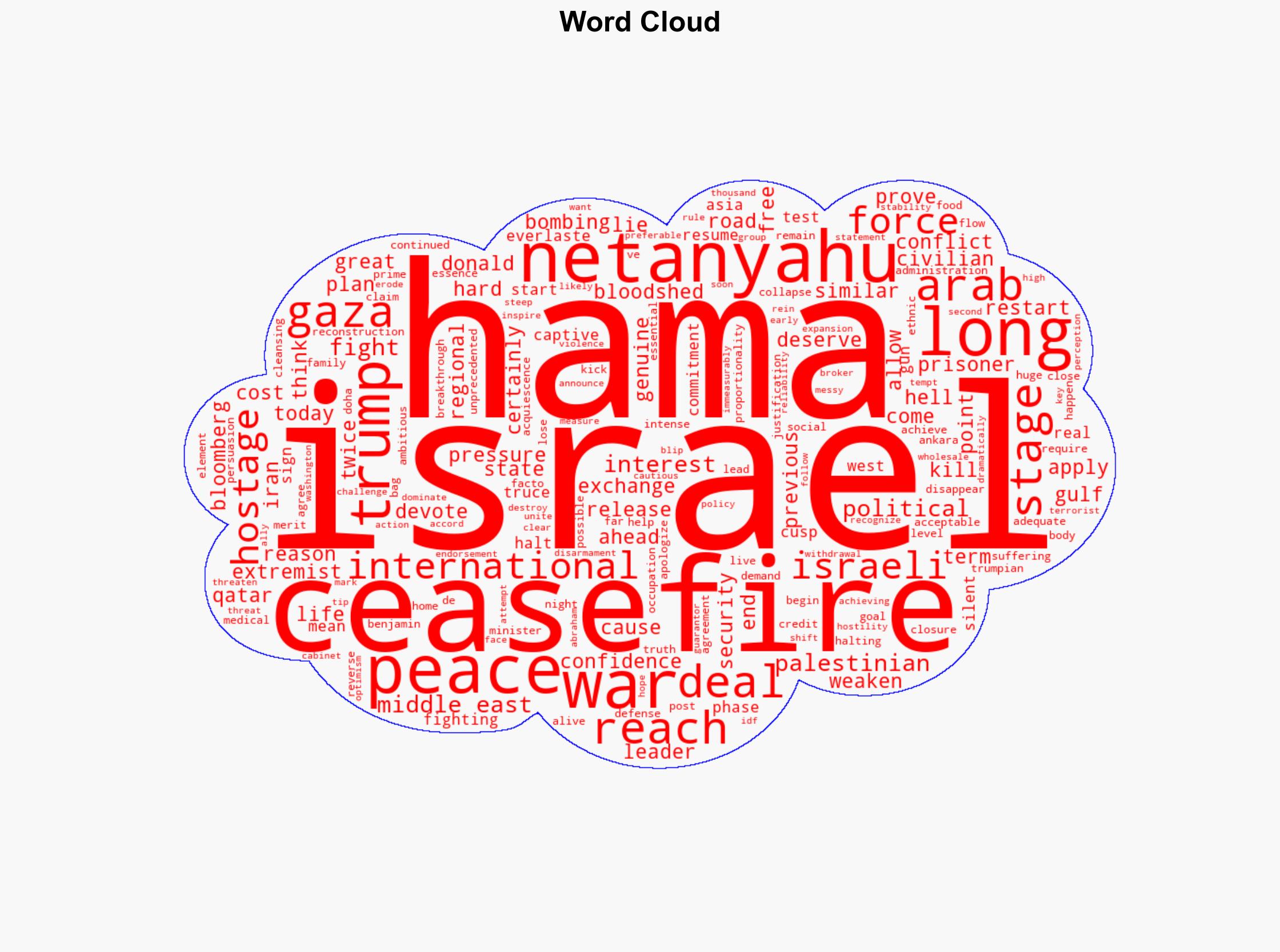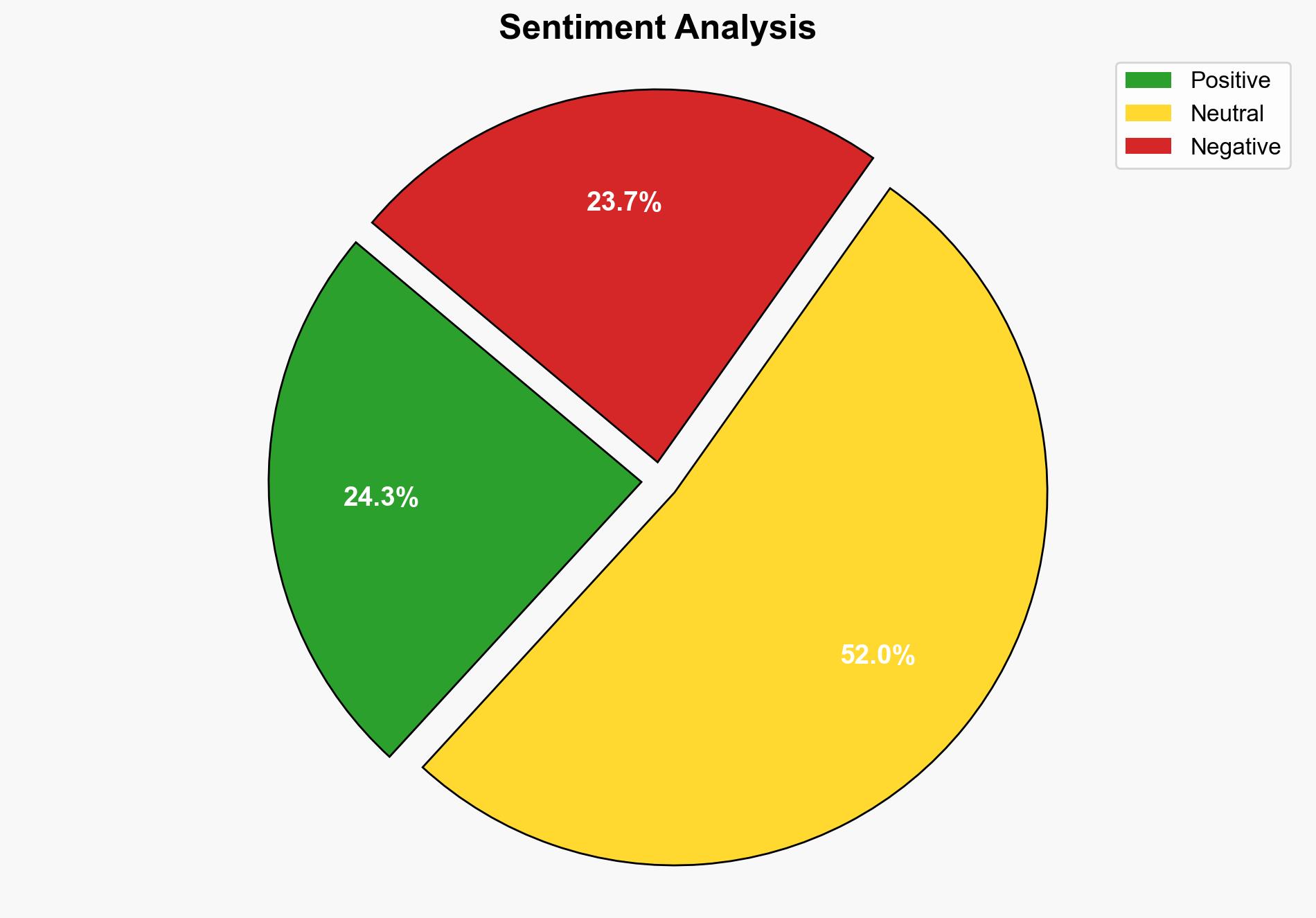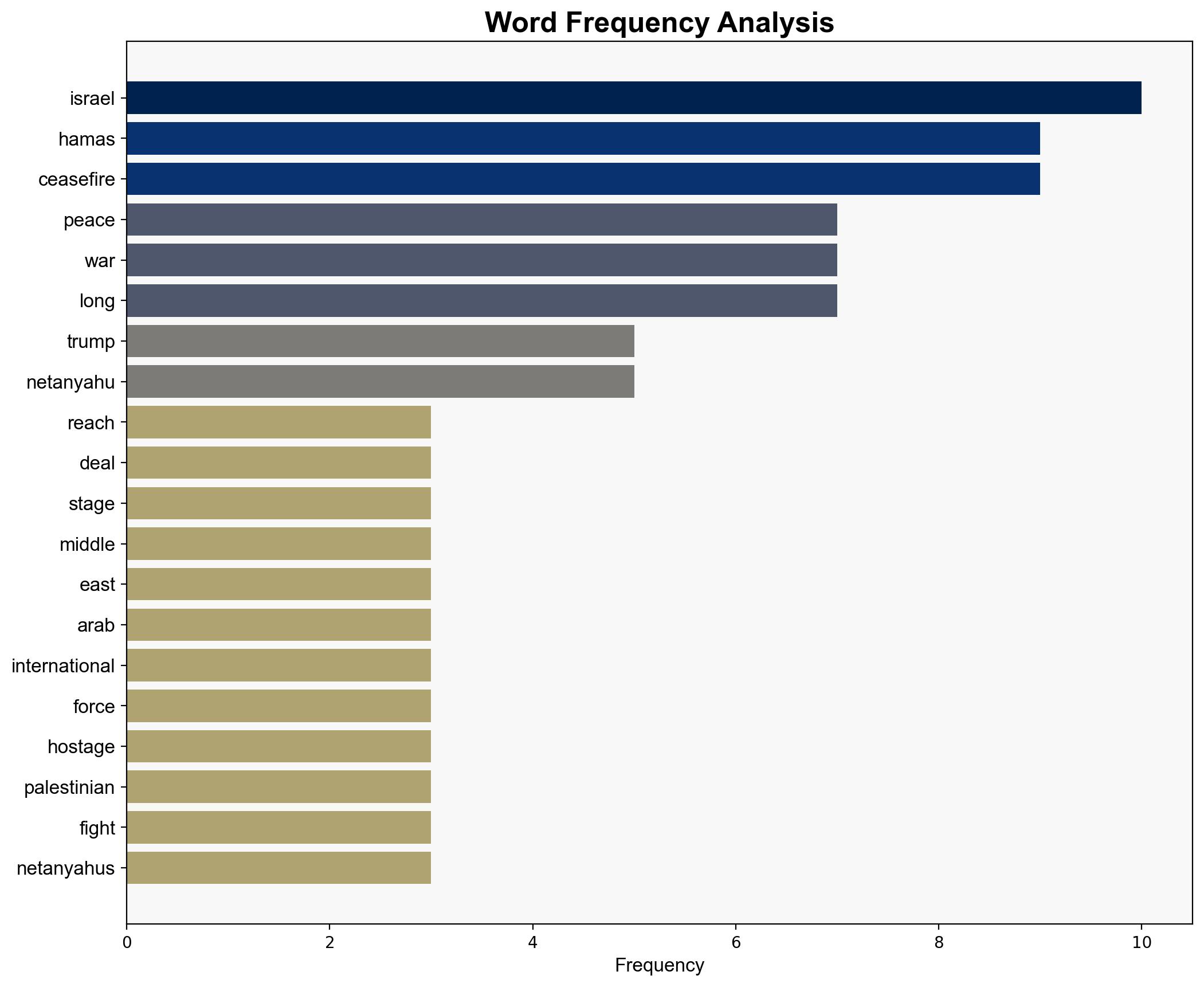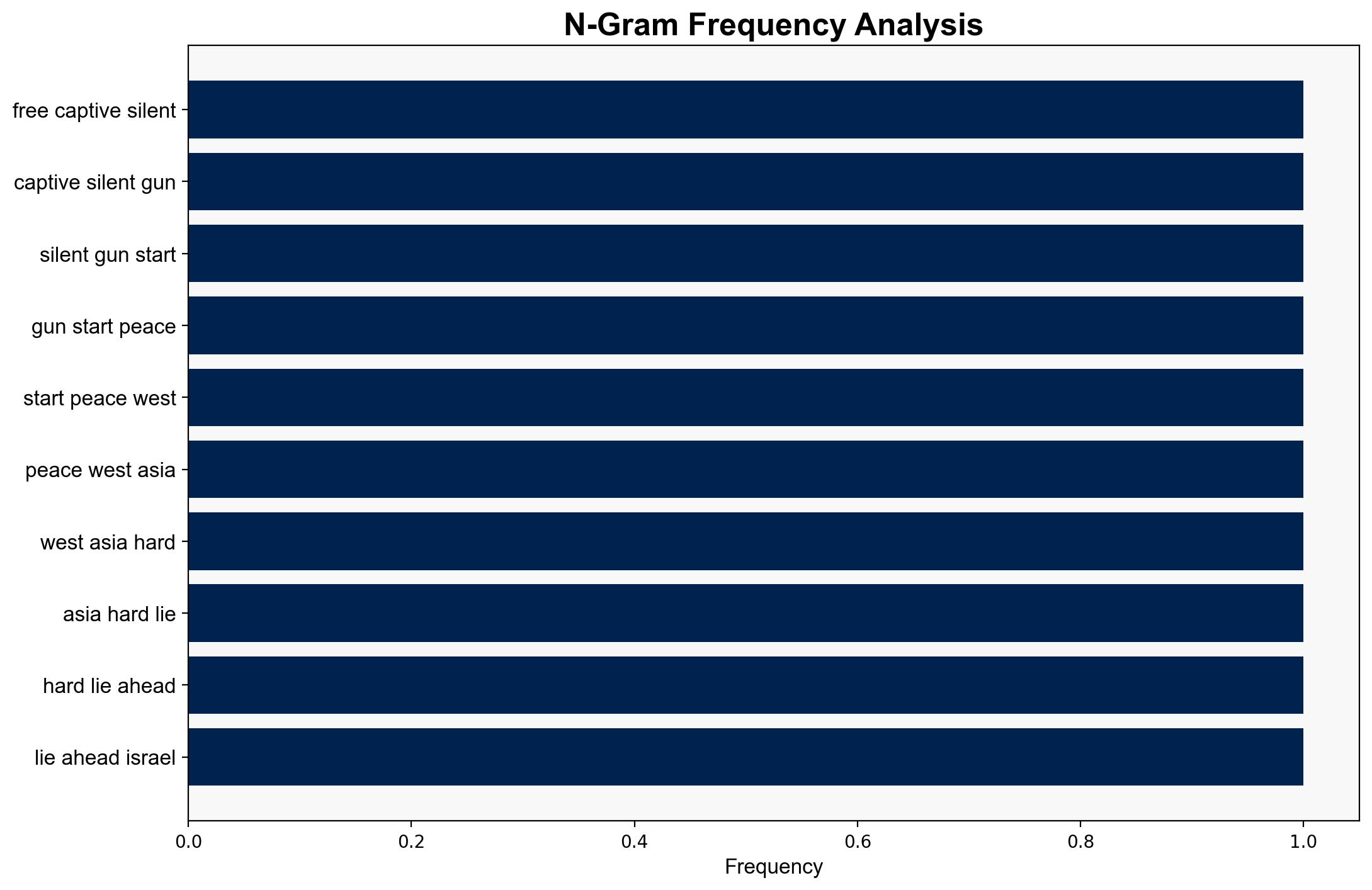While freed captives and silent guns are a good start for peace in West Asia the hard part lies ahead – Livemint
Published on: 2025-10-10
Intelligence Report: While freed captives and silent guns are a good start for peace in West Asia the hard part lies ahead – Livemint
1. BLUF (Bottom Line Up Front)
The current ceasefire between Israel and Hamas, facilitated by external pressure, represents a fragile step towards peace in West Asia. The most supported hypothesis suggests that the ceasefire is a temporary pause rather than a sustainable peace agreement, given historical precedents and ongoing tensions. Confidence level: Moderate. Recommended action: Engage in multilateral diplomatic efforts to strengthen the ceasefire and address underlying issues to prevent a resurgence of hostilities.
2. Competing Hypotheses
Hypothesis 1: The ceasefire will hold, leading to a long-term peace process. This scenario assumes that both parties, under international pressure, will prioritize diplomatic resolutions over military engagements.
Hypothesis 2: The ceasefire is temporary, and hostilities will resume due to unresolved core issues and political pressures on both sides. This hypothesis considers past ceasefire failures and the entrenched positions of key actors.
3. Key Assumptions and Red Flags
Assumptions:
– Hypothesis 1 assumes sustained international pressure and effective mediation.
– Hypothesis 2 assumes that historical patterns of conflict recurrence will continue.
Red Flags:
– Lack of concrete disarmament plans for Hamas.
– Netanyahu’s political dynamics and potential for policy reversal.
– Absence of a comprehensive framework addressing the humanitarian and political grievances of both sides.
4. Implications and Strategic Risks
The ceasefire’s fragility poses risks of renewed violence, potentially destabilizing the region further. Economic reconstruction efforts in Gaza could be undermined, leading to humanitarian crises. Geopolitical tensions may escalate if external actors, such as Iran or regional allies, perceive an imbalance in the ceasefire’s implementation. Cybersecurity threats could increase as parties seek asymmetric means to influence outcomes.
5. Recommendations and Outlook
- Facilitate a multilateral peace conference involving key regional and international stakeholders to address core issues and build a sustainable peace framework.
- Enhance monitoring mechanisms to ensure compliance with ceasefire terms, involving neutral international observers.
- Scenario Projections:
- Best Case: Ceasefire holds, leading to a comprehensive peace agreement and regional stability.
- Worst Case: Ceasefire collapses, resulting in intensified conflict and regional destabilization.
- Most Likely: Periodic skirmishes occur, but major conflict is avoided through ongoing diplomatic interventions.
6. Key Individuals and Entities
– Donald Trump: Applied pressure for ceasefire.
– Benjamin Netanyahu: Israeli Prime Minister, key decision-maker.
– Hamas: Palestinian organization involved in the conflict.
7. Thematic Tags
national security threats, regional stability, peace negotiations, geopolitical dynamics





